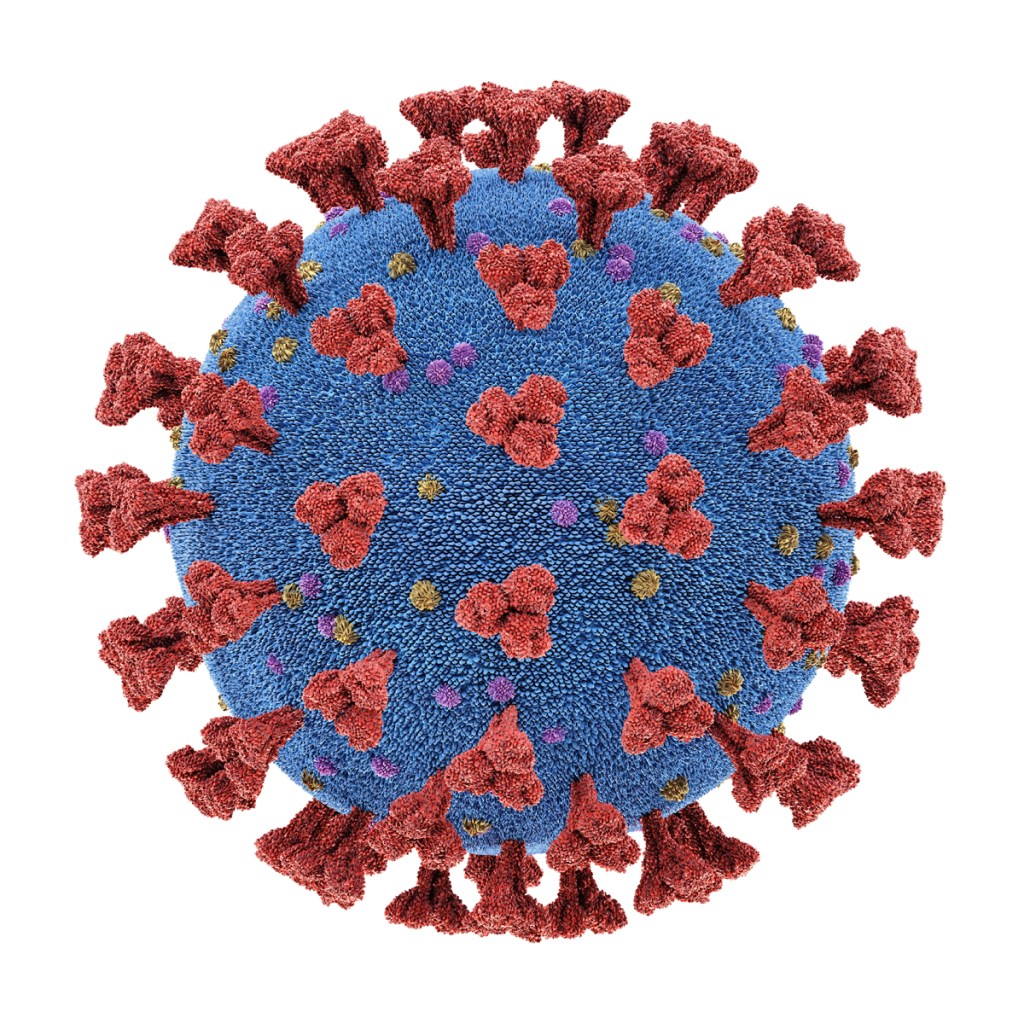Identified cases tops 439,500 in Louisiana
Published 5:00 am Friday, March 19, 2021

- Rough positivity rate for new cases reported Thursday was 2.6 percent.
The LDH update Thursday showed 558 new COVID-19 cases based on 21,996 new tests, pushing the state’s total of identified cases to 439,543.
Of the overall identified cases, 376,548 are confirmed, with 62,995 listed as possible cases.
According to an LDH spokesman, people initially identified as having a positive antigen test who are later identified as having a positive confirmatory test will be removed from the possible case count and added to the cumulative case count.
The rough positivity rate for the new cases reported Thursday was 2.5 percent.
Louisiana had 9,974 total COVID-19 deaths as of Thursday, with 19 new deaths added. Of the total deaths, 9,190 are confirmed with 784 considered probable COVID-19 fatalities pending final testing.
The average age of fatal patients remained at 75, while the median age was at 76 as of March 10.
Local numbers
In Iberia Parish, the number of cases rose to 6,585 Thursday, an increase of five. Of those, 6,041 are confirmed, with 544 probable. The number of deaths rose by one, to 149, with 136 confirmed and 13 probable. There have been 86,279 tests performed in the parish. The seven-day average test positivity dropped by 2.6 percent, from 3.8 percent on March 3 to 3.7 percent on March 10. The incidence of tests rose by 32.6 percent, from 64.8 per 10,000 population on March 3 to 86 on March 10.
St. Martin Parish’s number of identified cases rose to 4,952, an increase of 14, with 60,371 tests performed. The seven-day average test positivity rate rose from 3.5 percent on March 3 to 6.3 percent on March 10, an 80 percent increase, while the testing incidence rate per 10,000 population dropped 35.1 percent, from 69 on March 3 to 44.8 on March 10. The number of deaths remained at 115, with 103 confirmed and 12 probable.
In St. Mary Parish, the seven-day positivity rate dropped to 4.2 percent as of March 10, down from 6.1 percent on March 3, a 31.2 percent increase. The testing incidence rate per 10,000 population dropped, from 132.6 on March 3 to 120.5 on March 10. Total cases Thursday rose to 4,333, after 53,134 tests. Of those positive tests, 3,440 are confirmed, with 893 probable. The number of COVID-19 deaths remained at 126, with 112 confirmed and 14 probable.
Around the state
In Lafayette Parish, the Thursday case count rose by 28, to 22,029, with the number of tests rising to 300,120. The seven-day test positivity average remained at 3.7 percent as of March 10. The testing incidence rate per 10,000 population dropped during the same period, from 71.67 on March 3 to 60.1 on March 10, a 16.9 percent decrease. The number of deaths remained at 266, with 248 confirmed and 18 probable.
The number of cases in Jefferson Parish rose to 44,664 on Thursday, compared to an increase to 29,021 in Orleans Parish. The latest data shows Orleans administered more tests, with 822,219, compared to 589,061 tests in Jefferson.
Jefferson Parish continues to surpass the COVID-19 death toll in Orleans Parish. Orleans Parish deaths were at 778, with 728 confirmed and 50 probable. In Jefferson Parish, the total number of deaths rose to 871, with 835 confirmed and 36 probable.
Hospitalizations
The LDH reporting showed hospitalizations statewide due to coronavirus infections dropped by 32, to 414 on Wednesday. The number of patients on ventilators rose by one, to 67.
The number of COVID-19 hospitalizations in Region 4, which covers Acadiana, remained at 52 Wednesday. The number of patients on ventilators dropped by one, to six.
Overall hospital bed occupancy in Region 4 Wednesday was at 73.9 percent, with 1,232 of the region’s beds occupied and 436 available. The total number of reported beds was at 1,668.
Overall intensive care unit occupancy across Acadiana was at 84.6 percent Wednesday, with 132 of 156 beds occupied.
The overall occupancy percentages are based on all cases, not just COVID-19 cases, and includes not only the physical bed and space but also the staff required to issue care. The burden of additional patient load affects the ability of hospitals to serve all patients, especially in critical care situations.
By age group
Broken down by age group, the number of cases statewide in the 18 to 29 demographic was at 89,519 Thursday. It is the demographic group with the largest number of identified cases by far. The number of deaths reported in the group was 35.
The number of COVID-19 cases identified in the 30 to 39 age group was at 70,549, with 127 deaths, followed closely by the 40 to 49 age group, with 63,949 cases and 292 deaths, and the 50 to 59 age range with 63,301 cases, including 828 fatalities reported.
In the 60 to 69 age group, there were 50,698 cases reported and 1,881 deaths. This age group has the second-highest number of deaths, behind only the 70 and above demographic group.
The 70 and above group case count was at 45,281. The number of deaths in that group rose to 6,804 — still the largest number of fatalities for any age group by far, more than the number of deaths in all other groups combined and more than two-thirds of the total COVID-19 attributed deaths in the state.
The under 18 group had 55,931 cases total — 10,205 age 4 and under — and seven reported deaths.
Seven-day average
The state’s seven-day average of tests given as of March 10 was 207.3 tests per 10,000 residents, down from 240.5 on March 3. The positivity rate among those tests dropped by two-tenths of a point as of March 10 to 2.9 percent, down from 3.61 percent on March 3.
In Region 4, the March 10 testing rate was even lower, at 195.3 tests per 10,000 residents. The seven-day average percent positive of those tests was higher than the state average at 3.7 percent, down from 4 percent on March 3.
According to Tuesday’s update, labs in Louisiana have processed 6,311,156 COVID-19 tests so far.
Gender, underlying conditions
By gender, the state’s bi-weekly report shows women still making up the largest part — 56 percent — of the identified COVID-19 cases in the state, with men comprising 44 percent. On the other hand, the COVID-19 deaths are predominantly among men, 53.2 percent to 46.8 percent for women.
The number of presumed recovered cases, as of March 15, rose to 426,243. In order to be considered recovered, a living patient must either be out of the hospital and 14 days past a positive test result, or 21 days past a positive test date if their hospitalization status is unknown.
Initially, LDH reported that 70 percent of all COVID-19 deaths in the state were in the Black community. That number dropped to 38.4 percent as of March 10, while White victims now make up 60.1 percent of all fatal cases.
The Native American/Alaskan Native total was at 0.15 percent. Native Hawaiian/Pacific Islander data remained at 0.08 percent. Other races identified include Asian at 0.81 percent, Unknown at 0.01 percent and Other at 0.4 percent.
That data is supposed to be reported once every two weeks as of the beginning of the year.
The top three underlying conditions among COVID-19 deaths in the March 3 report were hypertension (62.7 percent), diabetes (36.9 percent), and cardiac disease (27 percent).
Other factors included neurological disorders (26.3 percent), chronic kidney disease (21.4 percent), obesity (21.1 percent), congestive heart failure (16.3 percent), pulmonary issues (14.7 percent), cancer (8.8 percent), and asthma (4.1 percent). Only 4.2 percent of all patients had no underlying conditions.
Dwayne Fatherree is the community editor for The Daily Iberian. He can be reached at dwayne.fatherree@daily-iberian.com.
Gov. John Bel Edwards announced Thursday afternoon that, effective Monday, all of Louisiana’s essential workers are eligible to receive COVID-19 vaccinations.
In addition to those who had been eligible previously, the new expansion of eligibility qualifies the following to receive vaccination:
Bank tellers
Child, youth and family service workers
Clergy
Construction workers
Energy workers
Food and agricultural workers
Food service (restaurant) workers, hotel workers and other hospitality workers
Frontline government workers
Grocery store workers
Institutes of higher education faculty/staff
IT and communications workers
Judges, court staff, clerks of court and staff, district attorneys and public defenders
Manufacturing workers
Media workers
Postal workers
Public and private security and emergency preparedness workers
Public health workers
Public safety engineers and other workers
Transportation workers including river pilots
Veterinarians and support staff
Water and wastewater workers
Waste management workers
For a full list of all those now eligible, as well as other information on vaccine locations and availability, go online to ldh.la.gov/covidvaccine.




